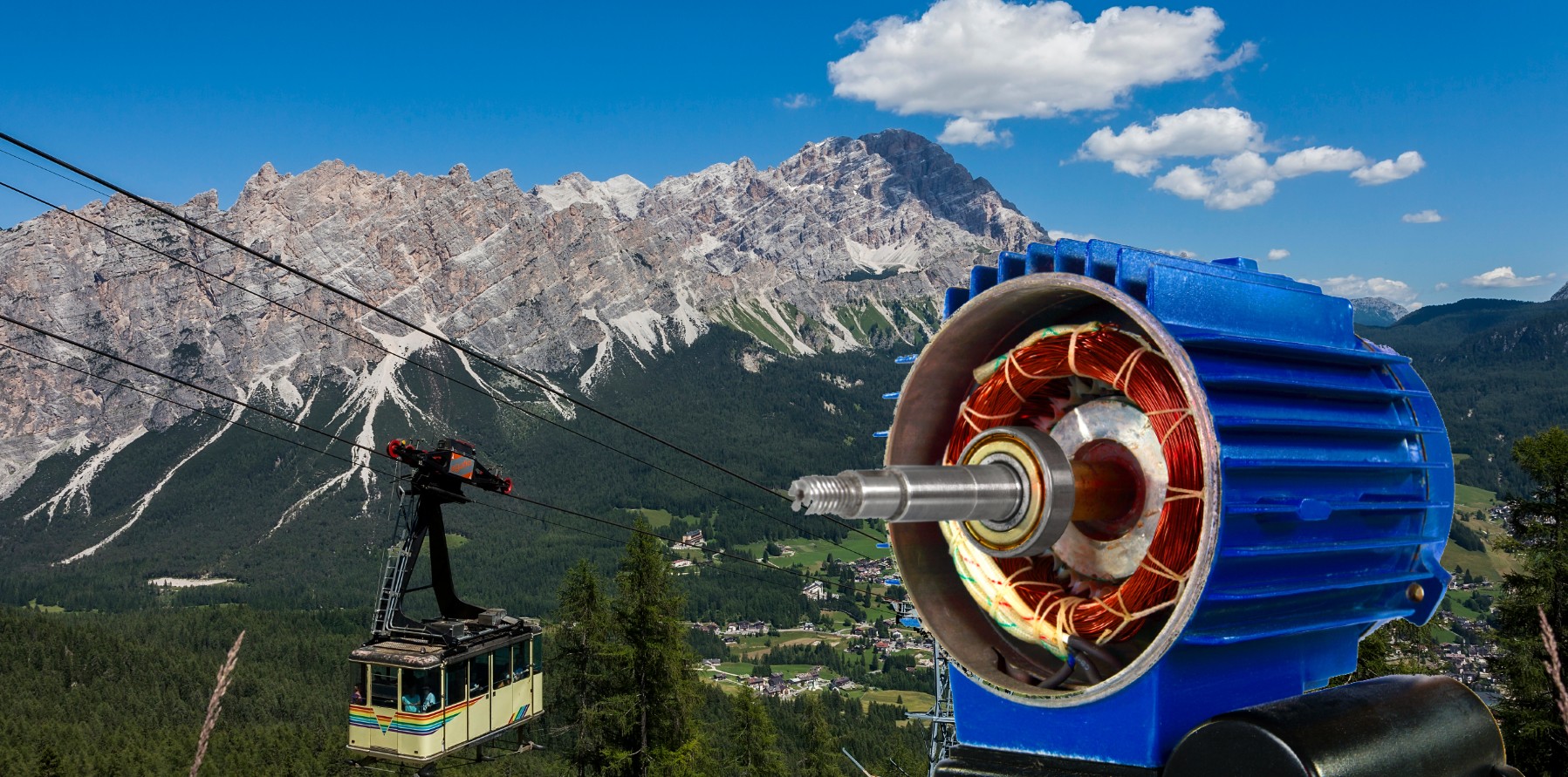To adjust a generator for high altitude, modify the fuel mixture and air intake according to the manufacturer’s instructions. Use high-altitude kits if available.
Operating a generator at high altitudes presents unique challenges, mainly due to thinner air affecting fuel combustion. Generators, like any combustion engine, require an optimal mix of air and fuel to run efficiently. At higher elevations, the reduced air pressure can lead to incomplete fuel burning, resulting in power loss and increased pollutants.
Recognizing this, manufacturers often recommend adjustments or special kits for altitudes above 2000-2500 feet. These adjustments are crucial for maintaining your generator’s performance, ensuring it operates safely, and extending its lifespan. Always consult your generator’s manual first, as it will provide the most accurate and specific guidance tailored to your model. Adapting your generator for high altitude use not only enhances efficiency but also helps in conserving fuel and reducing environmental impact.
High Altitude Challenges For Generators
Generators face unique issues at high altitudes. Thinner air affects their performance. Understanding these challenges is crucial for proper adjustment. Let’s explore the effects on engine performance and fuel combustion.
Effects On Engine Performance
Generators rely on air for combustion. At high altitudes, air pressure drops. This leads to less oxygen available for the engine. Engines then produce less power. This loss in power can be significant. It often exceeds 3% per 1,000 feet above sea level.
- Air density decreases with altitude.
- Engines struggle to maintain power.
- Adjustments are necessary for optimal performance.
Impact On Fuel Combustion
Fuel combustion becomes less efficient at high altitudes. The air-to-fuel ratio skews due to less oxygen. This can cause generators to run rich or lean. Running rich means too much fuel. Running lean means not enough. Both conditions can harm the engine.
| Altitude (feet) | Oxygen Level | Combustion Quality |
|---|---|---|
| 1,000 | Reduced | Can be managed |
| 5,000 | Greatly reduced | Needs adjustment |
| 10,000 | Significantly reduced | Requires significant adjustment |
Proper tuning ensures engines run smoothly. Adjust the carburetor or fuel injection system. Check the manufacturer’s guidelines. Use altitude kits if available.
Preparatory Steps Before Adjustment
Adjusting a generator for high altitude use is crucial. At higher elevations, the air is thinner. This change impacts engine performance. Before tweaking your generator, take key preparatory steps. Proper preparation ensures a smooth adjustment process.
Consulting The User Manual
Start with your generator’s user manual. It’s your best guide. Manuals provide specific adjustment instructions. They list altitude-related changes too. Always consult the manual before proceeding. This step avoids mistakes and potential damage.
Gathering Necessary Tools
Next, gather the tools you’ll need. Common tools include screwdrivers, wrenches, and jet kits. A complete tool set makes adjustments easier. Ensure you have everything on hand before you begin.
- Review the manual for tool specifics.
- Check for any special requirements.
- Prepare a clean workspace.
Assessing Generator Altitude Settings
Generators need the right settings for high altitudes. Air is thinner up high. This affects engine performance. It’s vital to adjust your generator’s altitude settings. Doing so ensures efficiency and longevity.
Identifying Current Altitude Configuration
Start with your generator’s current altitude setting. This setting is crucial. It matches engine performance with air density. Find this info in the owner’s manual or on the machine.
Understanding Manufacturer’s Altitude Recommendations
Each generator comes with specific guidelines. These are from the manufacturer. They tell how to adjust the generator for different altitudes. Follow these guidelines closely. They help keep your generator running well.
Check these things in your manual:
- Altitude levels – They impact engine tuning.
- Adjustment instructions – They guide the process.
- Parts needed – Some adjustments need special parts.
Use the right tools for adjustments. Keep your generator’s engine in top shape. Doing so provides reliable power, even at high altitudes.
Credit: www.rvforum.net
Adjusting The Carburetor For High Altitude
Running a generator at high altitude needs special adjustments. One key adjustment is on the carburetor. This ensures the generator runs smoothly and efficiently. Let’s dive into how to adjust the carburetor for high altitude.
Locating The Carburetor
The first step is to find the carburetor. It’s usually on the side of the generator. Look for a metal part with tubes and dials. It might be covered, so you might have to remove a panel.
Modifying The Air-fuel Mixture
At high altitude, air is thinner. This means your generator needs less fuel to mix with the air. Here’s how to adjust the air-fuel mixture:
- Find the adjustment screw: It’s on the carburetor. It might be labeled or mentioned in your manual.
- Turn the screw: Use a screwdriver. Turn the screw slightly to the left to decrease fuel flow.
- Test and adjust: Start your generator. Listen to how it runs. It should run smoothly. If not, adjust the screw a bit more.
This simple adjustment helps your generator perform better at high altitudes. It also helps in saving fuel and reducing wear on the engine.
Changing Fuel And Air Filters
Adjusting your generator for high altitude starts with changing fuel and air filters. Clean filters make sure your generator works well. They help it use fuel better and run smoothly.
When To Replace Filters
Know when to change your filters is key. Here’s a simple guide:
- After every 100 hours of use, or once a year, whichever comes first.
- Check more often in dirty or dusty places.
- Look for signs like hard starting or poor fuel economy.
Choosing The Right Filters For High Altitude
Not all filters fit high altitude needs. Consider these points:
- Size and fit should match your generator’s model.
- Choose high-quality brands known for durability.
- For high altitudes, special filters might be needed. They manage fuel and air better in thin air.
Changing your filters is a simple step to keep your generator ready for high altitudes. Clean filters mean a happy, efficient generator.
Spark Plug Considerations
When optimizing a generator for high altitudes, spark plugs play a crucial role. The thin air affects engine combustion. Thus, adjustments are necessary for efficiency and longevity.
Effects Of Altitude On Spark Plugs
At high altitudes, air density decreases. This means less oxygen for fuel combustion. Spark plugs must ignite a leaner air-fuel mixture. This mixture is harder to ignite. It can cause misfires. Spark plug health becomes essential.
Adjusting The Spark Plug Gap
Adjusting the spark plug gap can improve performance. A narrower gap compensates for thinner air. It ensures a strong spark for proper ignition. Follow these steps:
- Consult the generator’s manual for the recommended gap size.
- Use a gap gauge tool to measure the current gap.
- Adjust the gap by bending the ground electrode carefully.
- Recheck the gap to ensure it matches the specifications.
Remember to replace worn spark plugs. New ones maintain optimal performance. They prevent engine damage. Choose spark plugs designed for high altitude use. These plugs ensure better ignition in low-oxygen environments.
Regular maintenance is key. Check and adjust the spark plug gap periodically. This ensures consistent generator performance at high altitudes.
Oxygen Deprivation And Generator Efficiency
At high altitudes, generators face a unique challenge: oxygen deprivation. This can impact their efficiency. Understanding how to adjust your generator for these conditions is crucial.
Role Of Oxygen In Generator Performance
Oxygen is vital for fuel combustion in generators. It helps to convert fuel into energy. Higher altitudes mean less oxygen. This can lead to poor performance. Generators might produce less power. They may also use more fuel.
Compensating For Reduced Oxygen Levels
To ensure your generator runs effectively, you need to adjust it. You can do this by increasing the fuel-to-air ratio. This helps compensate for the thin air. Some generators have altitude adjustment features. Check the manual for instructions.
Use a high-altitude kit if available. These kits are made for this exact purpose. They will help your generator run smoothly. You can find them at hardware stores or online. Always follow the manufacturer’s guidelines.
Regular maintenance is also key. Clean the air filter often. This ensures your generator gets as much air as possible. Check the spark plug. Replace it if it’s worn. A good spark plug helps with efficient fuel combustion.
Remember to adjust the carburetor. This can be tricky. You might need a professional. They will tune it to the right settings for your altitude.

Credit: swiftequipment.com
Regular Maintenance At High Altitude
Generators need extra care at high altitudes. Thin air can affect performance. Regular checks ensure they run smoothly. Let’s explore key maintenance steps.
Scheduled Check-ups For Optimal Operation
Set a schedule for generator check-ups. Follow the manufacturer’s guide for high-altitude adjustments. Check fuel lines, air filters, and spark plugs often. Use a checklist to track maintenance tasks.
- Inspect air filters: Replace if dirty.
- Test battery: Ensure full charge and clean terminals.
- Examine fuel system: Look for leaks or clogs.
- Change oil: Use the correct grade for your altitude.
| Component | Check Frequency |
|---|---|
| Air Filter | Every 50 hours |
| Battery | Monthly |
| Fuel System | Every 100 hours |
| Oil | Every 100 hours |
Long-term Care For High-altitude Conditions
Generators at high altitudes face unique challenges. Maintenance ensures longevity. Adjust settings according to altitude. Clean and replace parts as needed.
- Adjust carburetor: Match altitude requirements.
- Monitor performance: Note any power changes.
- Secure connections: Tighten bolts and nuts.
- Store properly: Keep in a dry, clean place.
Remember, altitude affects oxygen levels. Engines need the right air-fuel mix to work well. Adjust the mix for your altitude.

Credit: hacenoroxygen.com
Frequently Asked Questions
Why Adjust Generator For High Altitude?
High altitudes reduce oxygen levels, causing generators to run less efficiently. Adjusting the generator helps maintain performance and prevent damage.
What Changes At High Altitude Affect Generators?
Thinner air at high altitudes means less oxygen, which can lead to incomplete fuel combustion and reduced power output in generators.
How To Adjust A Generator Carburetor For Altitude?
To adjust a generator carburetor for altitude, you typically need to install a smaller jet to maintain the correct fuel-to-air ratio.
Can High Altitude Damage Generators?
Operating a generator at high altitude without proper adjustment can cause engine damage due to lean fuel mixture and overheating.
Is A High Altitude Kit Necessary For Generators?
A high altitude kit is essential for optimal generator performance as it includes the necessary components to adjust for reduced oxygen levels.
Conclusion
Adjusting your generator for high altitudes ensures peak performance and longevity. Remember, proper tuning is key for efficiency and safety. Follow the steps outlined, and don’t hesitate to consult a professional if needed. Keep your generator running smoothly, no matter the elevation.
Stay powered up and prepared, wherever adventure leads.




